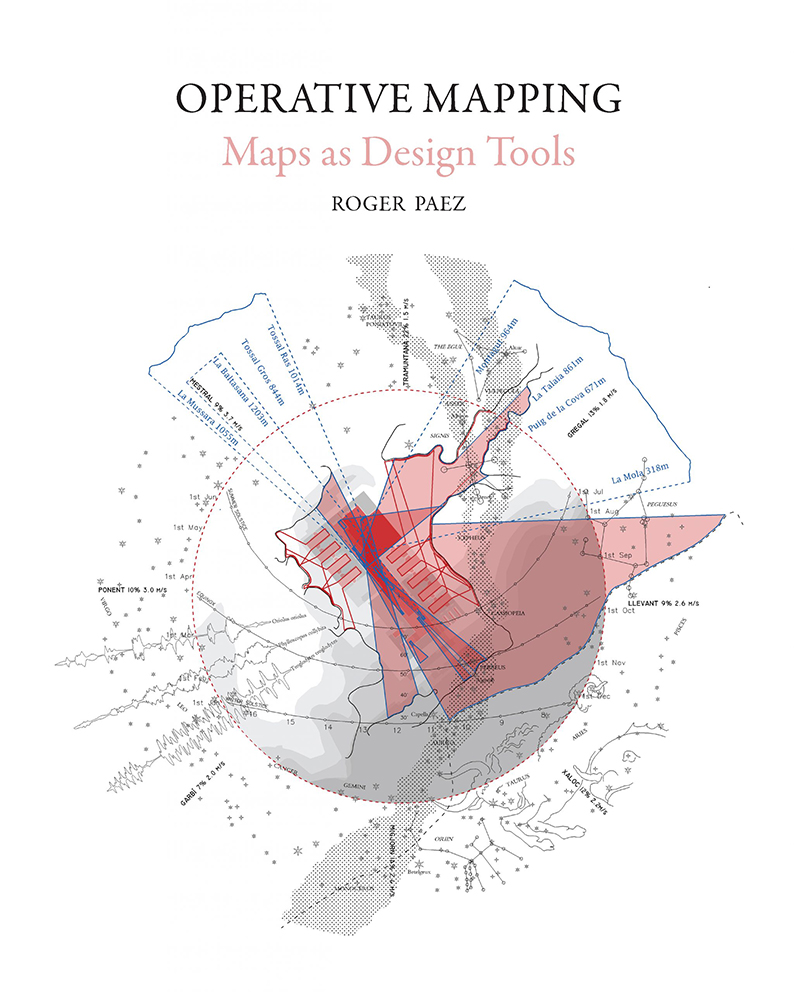Operative Mapping
Operative Mapping: Maps as Design ToolsRoger PaezActar Publishers / ELISAVA, March 2020Hardcover | 8-1/4 x 10-1/4 inches | 324 pages | English | ISBN: 978-1948765077 | $49.95Publisher's Description: The book’s fundamental aim is to offer a methodological contribution to the design disciplines, both in conceptual and instrumental terms. When added to the resources of contemporary design, operative mapping overcomes the analytical and strictly instrumental approaches of maps, opening up the possibility of working both pragmatically and critically by acknowledging the need for an effective transformation of the milieu based on an understanding of pre-existing conditions. The approach is pragmatic, not only discussing the present but, above all, generating a toolbox to help expand on the objectives, methodologies and formats of design in the immediate future. The book joins together a review of the theoretical body of work on mapping from the social sciences with case studies from the past 30 years in architecture, planning, and landscape design in the interest of linking past practices with future ones. Roger Paez is an architect, professor and researcher. Architect (ETSAB 1998, Hons.), MS AAD (Columbia University 2000, Honor Award for Excellence in Design), PhD (UPC 2015, Excel•lent cum laude). Professional experience in the studios of Alison and Peter Smithson and Enric Miralles. Referral Links: dDAB Commentary: It's safe to assume that most people know what mapping is: the process of making a map, a fairly objective representation of the world from above. I write "fairly" because maps have inherent biases, coming from the fact the Earth is round and maps are flat, the framing of a map often puts the creator at the center of it, and the boundaries drawn on maps either don't exist in reality (political) or are much softer than their representation (shorelines). Most obvious in regards to the subjectivity of maps is the Mercator projection, which skews the Northern Hemisphere bigger than it is in reality and puts Europe (or North America) in the middle of the world. R. Buckminster Fuller tried to correct the round-to-flat distortion with his Dymaxion map, but that more correct but still biased projection never took hold. So if maps are flawed yet still fairly accurate representations of the earth, what exactly is operative mapping? Apparently coined by Roger Paez in a 2009 article, the architect and author defines operative mapping in his recent book of the same name as "the production and use of maps to broaden our conception of reality and to promote its transformation." The concept of operative mapping recognizes the subjectivity of mapping, so Paez writes how the concept "draws on the understanding that maps and mapping produce reality, rather than merely reproducing it." Born from Paez's 2015 PhD dissertation, Operative Mapping is an explication of the concept, a presentation of maps aligned with it, and an examination of how it's used in architecture and related fields. Given its academic origins, it's a dense read, but it's also full of illustrations that make it appealing to people who love both architecture and maps, much like myself. A couple parts stand out for me. First are "Thirteen New Maps" Paez produced between 2001 and 2015 as representations of urban dérives, or explorations and experiences derived from the Situationists "in which the city is posited as both site and medium." One such maps sees Paez and a friend tracing the word "Village" across the streets of Greenwich Village through their footsteps; done in 2011 it foreshadows the apps that map one's walk or run so they can see their route and post it to social media. Another new map shows a walk through the covered arcades of Caerdydd, Wales, in an effort to maximize the time spent out of the rain while experiencing the town. Another standout was the whole third part of the three-part book: "Practice - Mapping Agency in Design." Operative maps by Alison and Peter Smithson, Rem Koolhaas, Cedric Price, Bernard Tschumi, James Corner, and others show the potential of using maps in design practice. With GIS, Google Maps, and other digital tools, it's easier than ever to incorporate mapping into design. For practitioners really interested in such an approach, Operative Mapping is a good reference for understanding and using the concept. Spreads:

Operative Mapping: Maps as Design Tools
Roger Paez
Actar Publishers / ELISAVA, March 2020
Hardcover | 8-1/4 x 10-1/4 inches | 324 pages | English | ISBN: 978-1948765077 | $49.95
Publisher's Description:









